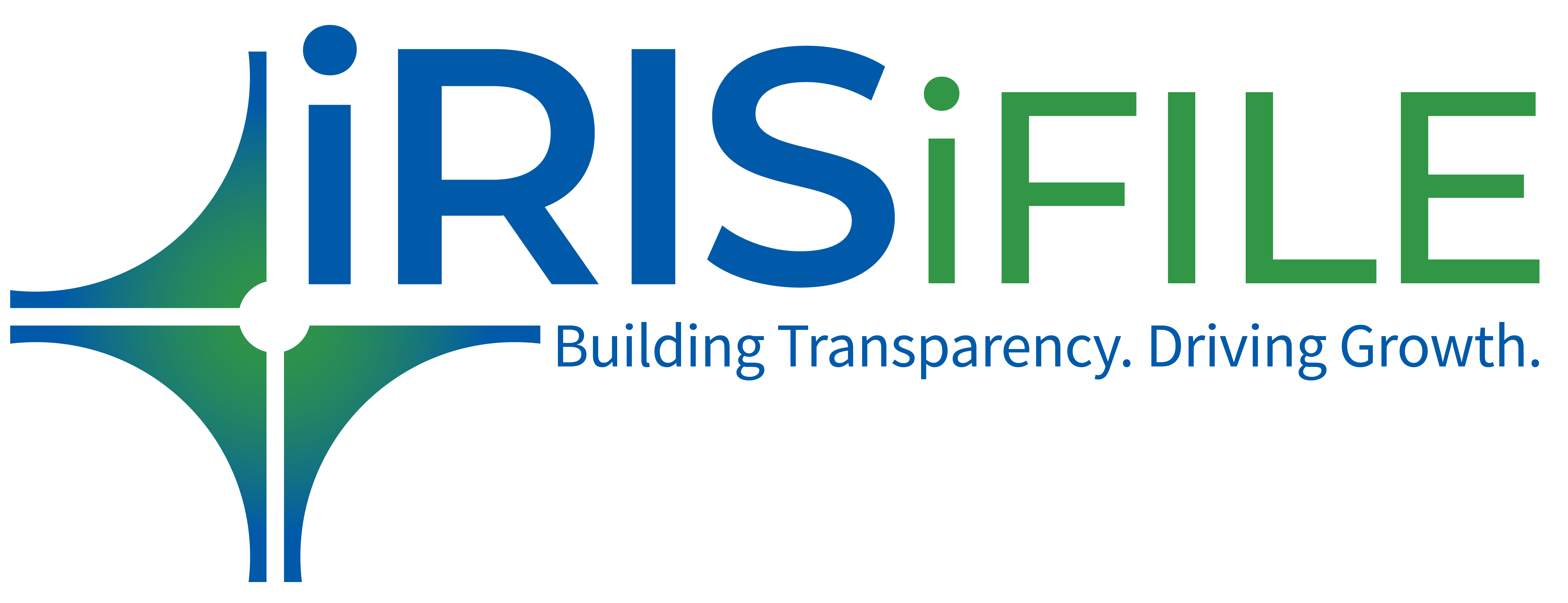The Reserve Bank of India (RBI), India’s central bank established in April 1935, regulates the currency and credit system of the country. It oversees a host of critical activities that include monetary policy regulation, supervision of banking and financial institutions and foreign exchange management.
In 2008, the central bank introduced XBRL-based reporting into its already existing Online Return Filing System (ORFS). Powered by IRIS iFILE, this new reporting system would help RBI to achieve significant benefits in the preparation, analysis and communication of business information. The RBI leveraged the XBRL standard for Basel II Reporting System, Section 42(2) Form A return of the RBI Act and for financial statement reporting.
Background
The RBI is well regarded world over for its regulatory acumen that played a key role in the Indian financial sector remaining virtually unscathed during the Asian financial crisis and the international banking and credit crisis. India’s central bank has an exemplary regulatory mechanism for banking supervision, a key component of which is the collection of information from banks across a large set of parameters on a frequent basis.
As part of the regulatory and supervisory functions, the RBI collects various fixed format data (called ‘returns’) from banks, financial institutions, authorized dealers and nonbanking financial institutions with submission frequencies ranging from daily to quarterly to annual.
The RBI had already shifted a large part of the collection of this information on to the ORFS. But though the online reporting system was functioning well, it had the following issues:
- Lack of a standard system for capturing data
- Some data was still filed manually through paperbased submissions
- Multiple copies of the same return were submitted to different departments
- Separate/disparate automated systems were used across departments
- Lack of standardization increased complexity in analyzing data
So while the existing system was capturing and transmitting data to some extent, it had no in-built standardization. RBI therefore decided to move to a standard system for the collection of returns.The RBI also drew inspiration from some other regulators that had seen remarkable cost savings and significant increase in data quality via the use of XBRL-based reporting systems.
The RBI wanted to use technology to capture quality information that could be reused across various regulatory functions and given the precedent, XBRL seemed like the right choice for the underlying information standard.
Challenges
There were a few challenges in creating the XBRL reporting solution for the RBI.
- Basel II Adoption: The Basel II norms were new and in the process of finalization. The RCA2 reporting framework under these norms incorporated sixteen templates covering capital details, credit risk, market risk and operational risk with more than 500 reporting items. Additionally, the reporting requirements had many parameters unique to the Indian context. The XBRL taxonomy creation was tricky since the reporting information was multi-dimensional and spanned many reporting templates.
- High-level Validation Requirement: In the absence of a base framework, creating a robust taxonomy within a limited time frame was a daunting task. The paramount need to have high quality data from banks required a number of validations using both taxonomy and business rules. The validations were to be clearly thought-through, tested and optimized for a large working group.
- Tight Timeline: Finally, the project had a very tight timeline. The RBI wanted to commence end-user testing within three months of starting the project. Moreover, the taxonomy creation was iterative as the RBI was still in the process of finalizing the reporting elements. Therefore, the time available for finalizing the taxonomy and incorporating that into the software at the reporting bank’s end was even lesser.
The Solution
The solution involved building the XBRL taxonomy and implementing the software platform for banks to submit the information and for the RBI to receive it. Phase 1 started in early 2008 with 7 returns in scope. Subsequently more returns were taken up which included those covering liquidity position, foreign exchange and financial statements.
A. XBRL Taxonomy
For this pioneering project, IRIS brought together a multi-disciplinary team that included accountants with taxonomy building expertise, software product architects and programmers. The team collaborated with a task force from the RBI, also assembled from multiple departments. The taxonomy creation process also received inputs from experts at the Bank of Spain who helped the team adopt best practices from other successful XBRL projects in Europe. Once the project was commissioned, the team worked on building the draft taxonomy as per RBI’s requirements and supporting business rules. Internally, IRIS tested the taxonomy with proprietary and third party XBRL software tools. The draft taxonomy was built and submitted to the RBI within the stipulated time for testing and validation.
B. Software Solution
While the taxonomy was being developed, the software for reporting banks was also built using the IRIS iFILE framework. The client end software was handed over to the RBI for testing with reporting banks.
Essentially, the software solution has two components, one at the reporting bank’s level (iFILE Client) and the other at the RBI (iFILE Server).

The RBI’s XBRL reporting solution architecture based on IRIS iFILE TM
1. iFILE Client
iFILE Client is a Microsoft Excel add-in with XBRL tags embedded within the Excel template. The taxonomy and related linkbase files are kept separately in a file system. The reporting banks download the iFILE Client application from the RBI portal. Once installed, the client application creates an Excel template. The banks only need to fill in the data points within the template. With all the business rules defined within the template, the filer is able to create prevalidated, error free submissions.
The reporting bank can also share the iFILE Client template with different departments for filling in the information. Once completely filled, the pre-validated XBRL document is encrypted using the filer’s digital signature. Once encrypted, it can be easily uploaded to RBI’s iFILE Server. If some banks wish to use third party apps for XBRL generation, they can do so and upload the file directly onto the iFILE Server, which can handle any validations and encryption.
2. iFILE Server
The iFILE Server side component includes:
- An administrator module to manage users both within RBI’s various departments as well as from filing banks.
- A validation engine to validate the instance document as per defined business rules of the regulator as well as XBRL specifications.
- A data repository for storing the filed information. Data is stored in native XBRL files as well as in a relational database.
- A reporting module for generation of predefined and custom reports for use across the central bank.
With this component, RBI is able to manage taxonomy versions, manage users and store the information shared by reporting institutions. It also provides a compliance dashboard that gives RBI a complete view and control over all transactions. RBI can also manage re-submissions via this component. The report module can generate standard reports to help flag off non-compliance or inconsistent data and can also generate custom reports enabling robust analytics.
The Results
The RBI’s XBRL vision though daunting, was ultimately achieved within the agreed timeline. The reporting information was redistributed across reporting templates and took into account all the required business rules to eliminate any room for error. The RBI taxonomy for RCA2 was successfully built on the Basel II system, which in itself was evolving at the time.
RBI gained the following benefits with this XBRL implementation:
- Increased Efficiency: Data consolidation at RBI was simplified due to the rule-based document storage capability within IRIS iFILE, which could be defined as per regulatory requirements. This increased efficiency and productivity.
- Quality of data: The RBI was able to significantly improve the quality of data received. Information ratified against business rules and validation checks ensured clean and error-free data being captured at the time of preparation itself. IRIS iFILE has validation modules present on both the filer side (before the XBRL document is created) and on the server side (once XBRL instance document is received by the regulator) thus ensuring a double validation system for better data accuracy.
- Scalability: With IRIS iFILE, a scalable platform was built to accommodate RBI’s vision of Automated Data Flow. The initial platform supporting 7 forms returns is capable of accommodating all RBI reporting which will commence in Phase 2.
- Reduced Processing Time: For Form A (Return for Cash Reserve Ratio), different categories of reporting institutions reported to different departments at RBI. Consolidation of data across various departments of RBI was time consuming. However, XBRL provided a common reporting platform for all submissions.
- Automation: Based on the data submitted by reporting institutions, RBI releases a fortnightly communication for the public summarizing the financial position of banks. With XBRL, RBI was able to automate the process and reduce the preparation time of this communication significantly.
Dr. Ramasastri, who spearheaded the XBRL program at the RBI, had this to say: “Let me at the outset congratulate IRIS for completing the first part of the project on XBRLbased data reporting by banks to Reserve Bank of India. We believe that XBRL taxonomies developed by IRIS for Basel II reporting would become the basis for taxonomies to be developed for other reporting systems. We find the system developed by IRIS for us to be meeting most of our requirements. We also find it to be quite user-friendly at bank’s level”.
Not only the RBI, but filers also saw efficiencies in their systems post-XBRL implementation. Keen to embrace XBRL to enhance internal MIS systems, reporting banks are now speaking to IRIS about the feasibility of deploying an XBRL framework internally. With XBRL, the possibilities are endless.
The RBI’s XBRL journey has just begun with the XBRL implementation for RCA2 returns. Going forward, IRIS will be working with the RBI to build additional taxonomies for extending the XBRL reporting framework to cover new returns.
About RBI
The Reserve Bank of India, RBI, is India’s central banking institution, which controls the monetary policy of the Indian rupee. It commenced its operations on 1 April 1935 during the British Rule in accordance with the provisions of the Reserve Bank of India Act, 1934. Following India’s independence on 15 August 1947, the RBI was nationalised on 1 January 1949.
The RBI plays an important part in the Development Strategy of the Government of India. It is a member bank of the Asian Clearing Union. The general superintendence and direction of the RBI is entrusted with the 21-member Central Board of Directors: the Governor, 4 Deputy Governors, 2 Finance Ministry representatives, 10 governmentnominated directors to represent important elements from India’s economy, and 4 directors to represent local boards headquartered at Mumbai, Kolkata, Chennai and New Delhi. Each of these local boards consists of 5 members who represent regional interests, and the interests of co-operative and indigenous banks.
The bank is also active in promoting financial inclusion policy and is a leading member of the Alliance for Financial Inclusion (AFI).
Learn more about the Reserve Bank of India at: www.rbi.org.in
About IRIS
IRIS Business Services Limited is a leading structured data solutions company with global presence in regulatory and compliance reporting software. The firm is uniquely positioned with offerings across the spectrum of creation, management and use of structured data in the realm of business and financial reporting. IRIS serves a client base that includes regulators in over a dozen countries around the world, leading banks, financial market intermediaries, consulting firms, financial printers as well as large and small enterprises. Our partner network includes the Big 4 accounting firms, system integrators and specialized software and consulting firms that use IRIS’ products and expertise to enhance their offerings to end clients.
Learn more about us at: www.irisbusiness.com








